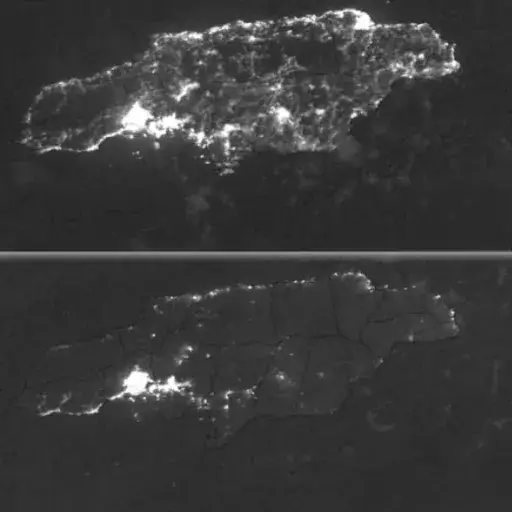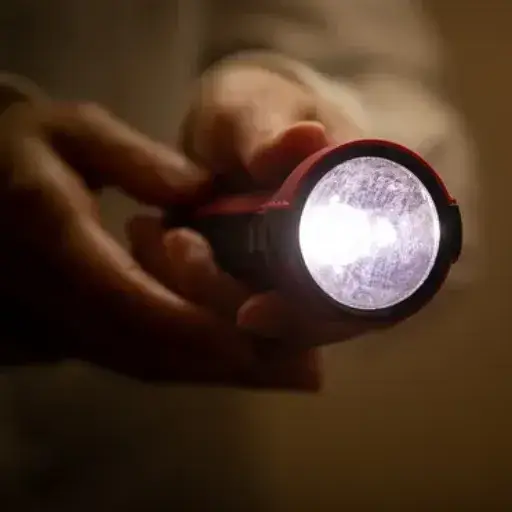Power outages disrupt daily life and can lead to significant financial losses. Residents and businesses in Jamaica need to be aware of power interruptions, including their scope, causes, and possible remedies. This comprehensive guide introduces the Jamaica Power Outage Map as a handy tool that provides real-time information on outages across the country. Whether you are a concerned homeowner, a business owner, or someone interested in energy-efficient techniques, this guide offers valuable insights to help you navigate these challenges effectively.
Overview of Power Outages in Jamaica

Power cuts are a common occurrence in Jamaica and are mainly due to severe weather conditions, infrastructure issues, and technical failures. Major storms and hurricanes typically damage the electrical grid, resulting in large-scale blackouts. Moreover, aging infrastructure and technical glitches sometimes cause power to be cut off temporarily. These interruptions can significantly affect the daily activities of people, businesses, and hospitals. Understanding these difficulties is essential for building resilience and preparedness.
Current State of Power Outages
Power outages affect millions of people worldwide repeatedly, driven by a combination of severe weather, weak infrastructure, and excessive electricity demand. The most severe weather events—hurricanes, tornadoes, and snowstorms—remain the leading cause of outages because they bring down power lines and overwhelm the grid. Aging power infrastructures in many areas are no longer capable of meeting demand, leading to frequent power cuts. Additionally, natural disasters, cyberattacks, and technical glitches prolong outages, underscoring the need to upgrade energy systems to withstand these challenges better and reduce their impact on communities and economies.
Historical Trends in Jamaica’s Power Supply
The power supply in Jamaica has undergone considerable changes over the years, driven by energy policies, technological developments, and external factors. During the energy crisis of the 1990s, the government turned to the private sector to boost electricity generation. While this move addressed the immediate situation, electricity remained heavily dependent on fossil fuels, and volatile global oil prices forced many people to face disconnections due to unaffordable costs.
The government has since promoted renewable energy sources—wind, solar, and LNG (liquefied natural gas)—as cleaner alternatives. However, most of the country’s power still comes from fossil fuels. The shift away from these sources is progressing gradually rather than rapidly due to the continued use of outdated power systems. Power blackouts still occur regularly, underscoring the need for further change and modernization in the energy sector.
Common Causes of Power Outages
| Cause | Description |
|---|---|
| Weather | Strong winds, hurricanes, torrential rains, and lightning can damage electric poles and local electric networks. |
| Infrastructure | Old devices and power distribution networks may not withstand strain or peak consumption, leading to failures. |
| Vegetation | Uncontrolled plant growth around power lines or their proximity can lead to power outages. |
| Animals | Rodents, birds, and squirrels may damage power lines or cause malfunctions in electrical equipment. |
| Human Interference | Cutting through or damaging power lines during road construction, traffic accidents, or vandalism may cause power outages. |
Accessing the Jamaica Power Outage Map

To access the Jamaica Power Outage Map, navigate to the utility provider’s official website responsible for electricity distribution in your area. Usually, the map is located in their “Outage Center” or similar section. This interactive tool allows users to view outage areas, check estimated restoration times, and report outages directly.
How to Find the Outage Map
- Visit the electricity provider’s official website
- Look for a section called “Outage Center” or similar
- Most providers display the map prominently on their websites
- Check for updates on current outages and estimated restoration times
- Report an outage in your area if necessary
Interpreting the Outage Map Information
When interpreting the outage map, concentrate on the basic information provided. Look for symbols or color-coded regions on the map, which typically indicate the number and status of outages. These might include:
- Total number of customers affected
- The reason for the outage, if known
- Estimated time for power restoration
Additionally, check the utility provider’s updates, as they usually post the most up-to-date information on ongoing restoration efforts. Don’t forget to use the legend or key on the map to understand the meanings of different icons or colors. This will help you gather necessary information quickly and easily.
Real-Time Updates and Notifications
To receive accurate, direct information:
- Visit the website of the leading utility provider in your area for their outage map or updates section
- Check local government or emergency management websites for additional details or links to utility updates
- Refer to reliable news sources for compiled reports and easy-to-understand summaries
Using these sources will keep you up to date with reliable, consistent information.
Importance of the Power Outage Map

The power outage map is an essential tool for delivering live information on affected areas, repair progress, and estimated restoration times. It helps individuals and communities prepare, stay informed, and make necessary arrangements during outages. The map provides trustworthy, user-friendly information that reduces misunderstandings and plays a significant role in ensuring public safety.
Benefits for Residents and Businesses
✓ Improved Preparedness
Residents can take preventive measures such as charging devices and stocking supplies. Businesses can implement steps to reduce losses during shutdowns.
✓ Enhanced Safety
Access to current information about power cuts helps people avoid affected areas, minimizing dangers associated with power outages.
✓ Better Planning
Restoration timelines allow residents and businesses to plan accordingly, whether by arranging alternative workspaces or maintaining critical systems.
✓ Reduced Business Downtime
Companies can schedule around power outage periods in their workflows, minimizing delays and disruptions.
✓ Community Awareness
Well-organized communication builds a community that is prepared, informed, and coordinated together.
Enhancing Planning and Safety Measures
The power outage map serves as both a practical and necessary tool for improving safety measures and planning. It provides instant updates on the extent and intensity of current outages, helping individuals and companies take informed actions to minimize disruption. Data shows a sharp increase in searches for “power outage updates” during crisis times, underscoring the need for accurate, detailed outage information.
This tool empowers users to allocate resources more efficiently—for example, purchasing batteries for devices or relocating to areas with power. Emergency responders rely on this tool to identify critical areas needing prompt support, thereby reducing risks and improving recovery time.
Transparency and Communication by Utility Companies
The power outage map significantly enhances interactions and transparency between utility companies and customers during emergencies. Customers remain informed with real-time updates on affected areas, restoration timelines, and outage extent. By providing clear, easily accessible information, utility companies build trust and reduce customer frustration.
Furthermore, these maps facilitate more seamless coordination of response activities, allowing utility companies to prioritize the areas most in need and dispatch resources accordingly. The power outage map is instrumental in ensuring accountability and fostering better relationships between utility service providers and the communities they serve.
Implications of Power Outages

Power outages have various consequences, affecting the general population, businesses, and critical infrastructure. For individuals, power cuts disrupt daily routines, limit communication, and create health and safety risks in harsh conditions. Business operations halt, inventory spoils, and financial losses mount, while disruptions to services such as hospitals, water supply systems, and emergency response networks can be significant. Prolonged outages drain community resources and create larger social and economic issues.
Impact on Households and Daily Life
Power outages severely affect households, limiting access to lighting, heating, and refrigeration. Families struggle to cook meals, preserve food, and maintain comfortable living conditions, especially during extreme weather. Additionally, loss of access to phones and the internet cuts people off from the outside world, including during emergencies.
Mental well-being suffers as uncertainty becomes the norm, leading to stress. For those dependent on medical machines or time-sensitive medications, these disruptions pose serious health risks, underscoring the critical importance of electricity in daily life.
Effect on Businesses and Economic Stability
Power outages cause significant financial losses and delays for businesses. Companies in manufacturing, retail, and technology face severe production stoppages due to non-operational machinery, perishable goods spoilage, and e-commerce shutdowns. Small businesses operating on tight margins suffer most from lost sales during outages, making financial strains harder to bear.
Large companies may experience supply shortages, service delivery delays, and reputational damage. In regions with frequent outages, investments become less attractive as companies seek reliable power sources to safeguard operations. Local economies suffer from supply chain interruptions and declining consumer spending during prolonged outages. The economy’s vulnerability to power disruptions highlights the need for robust infrastructure and emergency preparedness measures to ensure resilience.
Essential Services and Community Response
Medical services, water supply, and communication networks are severely affected by power outages. Hospitals may struggle to operate life-saving machines, while water facilities may be unable to provide safe drinking water without electricity. Communication breakdowns make coordinating emergency services difficult, jeopardizing public safety.
Communities typically respond by using power generators, working with local authorities, and implementing disaster recovery plans to maintain basic services. Building resilience involves acquiring clean energy, modernizing the electric grid, and conducting emergency drills so that vital services remain available even during power outages.
Preparing for Power Outages

Developing a communication and emergency response plan ensures everyone knows how to stay safe and connected during an outage. Individuals and communities can take proactive steps such as building an emergency kit with essential supplies, installing backup power sources like generators or solar panels, and staying informed about local weather conditions and outage alerts.
Creating an Emergency Kit
An emergency kit is essential for helping you and your loved ones navigate power outages. Include the following items:
🔦 Flashlights and Batteries
Essential for reliable lighting. Keep spare batteries on hand and avoid using candles to reduce fire risk.
🥫 Non-Perishable Food and Water
Store food for at least three days per person and one gallon of water per person per day.
🏥 First Aid Kit
Include band-aids, antiseptics, medications, and any necessary medical items.
📻 Communication Tools
A battery-operated or hand-crank radio for news updates. Keep a portable phone charger fully charged.
🧥 Warm Clothing and Blankets
Provide warmth during cold seasons, especially when heating units are out of service.
🧼 Hygiene Items
Stock personal hygiene products, including hand sanitizer, toilet paper, and wet wipes.
📄 Important Documents
Keep copies of personal identification, medical information, and emergency contacts in a waterproof folder.
Important: Store your emergency kit in a central, easily accessible location and check it regularly to replace expired items.
Communication Strategies During Outages
Safety and information flow are critical during outages. Clear communication maintains both. Implement the following key strategies:
- Keep Devices Charged: Always charge phones, power banks, and other communication devices before predicted outages. Have solar and hand-crank chargers available for prolonged outages.
- Use Emergency Alerts: Stay informed with notifications from local authorities via the app or SMS.
- Create a Contact Plan: Plan communication with family and friends. Choose primary and backup communication methods and set specific check-in times to conserve battery power.
- Utilize Two-Way Radios: Two-way radios provide efficient short-distance communication when mobile networks are down.
- Social Media and Community Channels: Use Twitter and local apps for firsthand information about power outages and utility company activities in your area.
Alternative Power Solutions
During power interruptions, reliable alternative power sources ensure essential devices and appliances remain operational. Consider these effective solutions:
| Power Solution | Description & Benefits |
|---|---|
| Portable Generators | Handy for powering essential appliances such as refrigerators and medical devices. Ensure adequate ventilation to prevent carbon monoxide poisoning. |
| Solar Chargers | Small and eco-friendly, ideal for powering phones and tablets during emergencies. |
| Power Banks | High-capacity power banks charge devices for extended periods and are convenient to store and carry. |
| Battery-Powered Devices | Stock battery-powered flashlights, radios, and fans to maintain basic functions during blackouts. |
| Backup Power Systems | For long-term readiness, consider installing home-based battery backup systems, such as solar-powered options. |
Investment Tip: Purchasing these alternative energy solutions is an investment that helps eliminate disruptions and ensures the availability of critical resources during power cuts.
Reference Sources
📍 Jamaica Public Service (JPS) Outages Page
Provides comprehensive information on current and scheduled outages, along with instructions for reporting them.
🛰️ Satellite Imagery Showing Power Outages Across Jamaica
Offers visual insights into power outages via advanced satellite imagery.
🗺️ JPS Power Outage Reporting and Map
Features an interactive map for navigating and understanding power outages in Jamaica with real-time updates.
Frequently Asked Questions (FAQs)
❓ What is the Jamaica power outage map?
The Jamaica power outage map illustrates areas of the island experiencing power outages. It constantly updates outage information and informs the public about the status of their electricity service.
❓ How can I access the latest Jamaica power outage map?
The latest Jamaica power outage map can be accessed through various sources, including utility company websites and their social media profiles (e.g., Facebook). These channels typically provide timely information about outages and restoration efforts.
❓ What should I do during an extended power outage in Jamaica?
During an extended power outage, stay vigilant and informed. Monitor power and outage services and check the outage map regularly. Always keep flashlights and batteries ready, and avoid using candles to prevent fire accidents. Follow your emergency preparedness plan and stay connected with local authorities for updates.
❓ How does the Jamaica power outage map provide faster updates?
By utilizing real-time data from utility companies, the Jamaica power outage map provides quicker updates. This ensures residents receive the most up-to-date information on outages and restoration times, enabling better planning and decision-making.
❓ Can I report an outage through the Jamaica power outage map?
While the Jamaica power outage map primarily displays existing outages, utility companies sometimes allow outage reporting through their websites or customer service lines. The map may have links to these services for your convenience.
❓ Why are power outages common in Jamaica?
Jamaica experiences power outages due to various factors including hurricanes, equipment breakdowns, and line maintenance. The Jamaica power outage map highlights affected areas and estimated restoration times, keeping residents informed.
Stay Informed, Stay Prepared
The Jamaica Power Outage Map is more than just a tool—it’s your connection to reliable information during challenging times. By understanding how to access and interpret this resource, preparing emergency supplies, and implementing communication strategies, you can navigate power outages with confidence. Remember, preparedness today means safety and security tomorrow. Stay vigilant, stay informed, and empower your community with knowledge.
